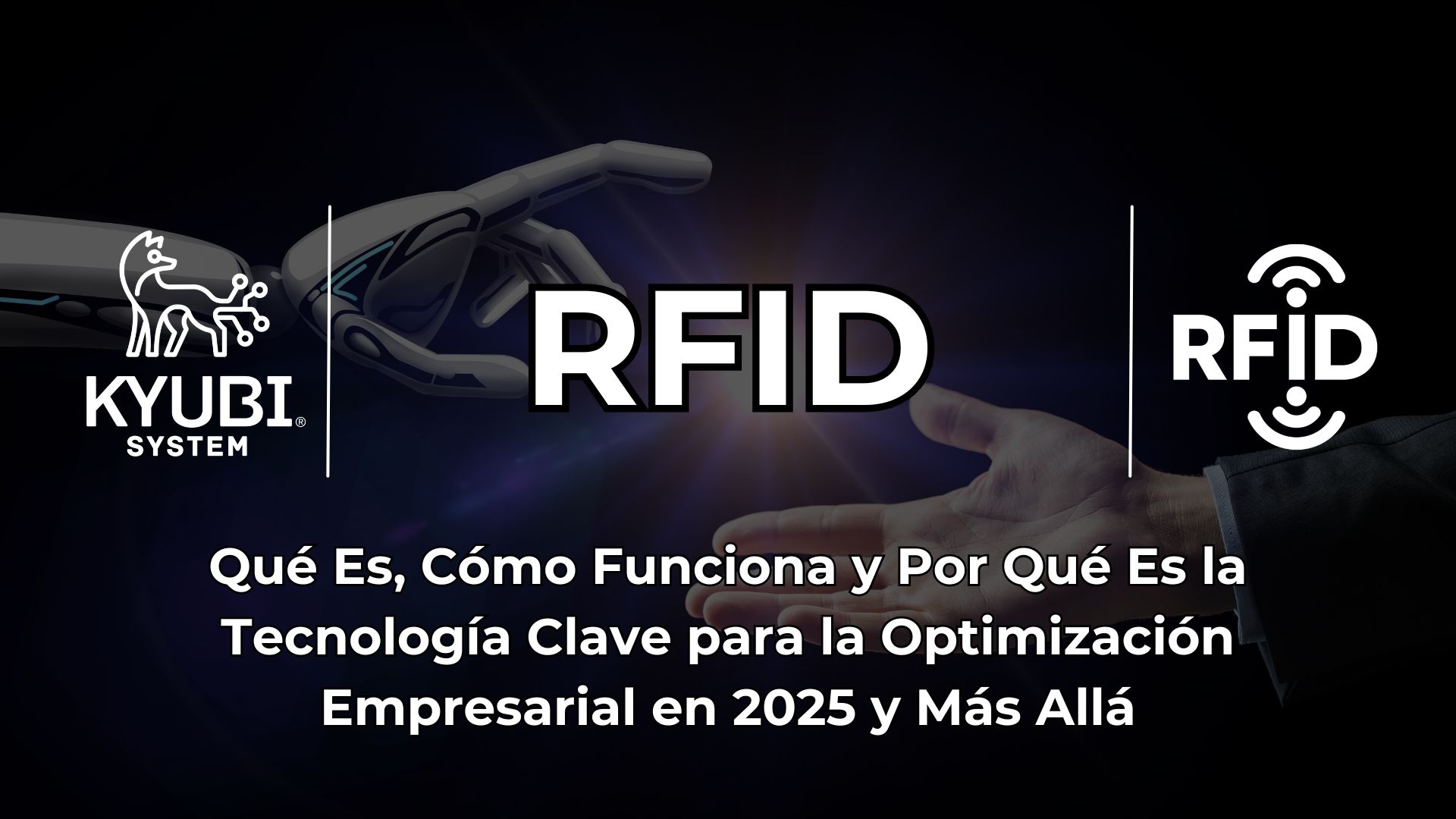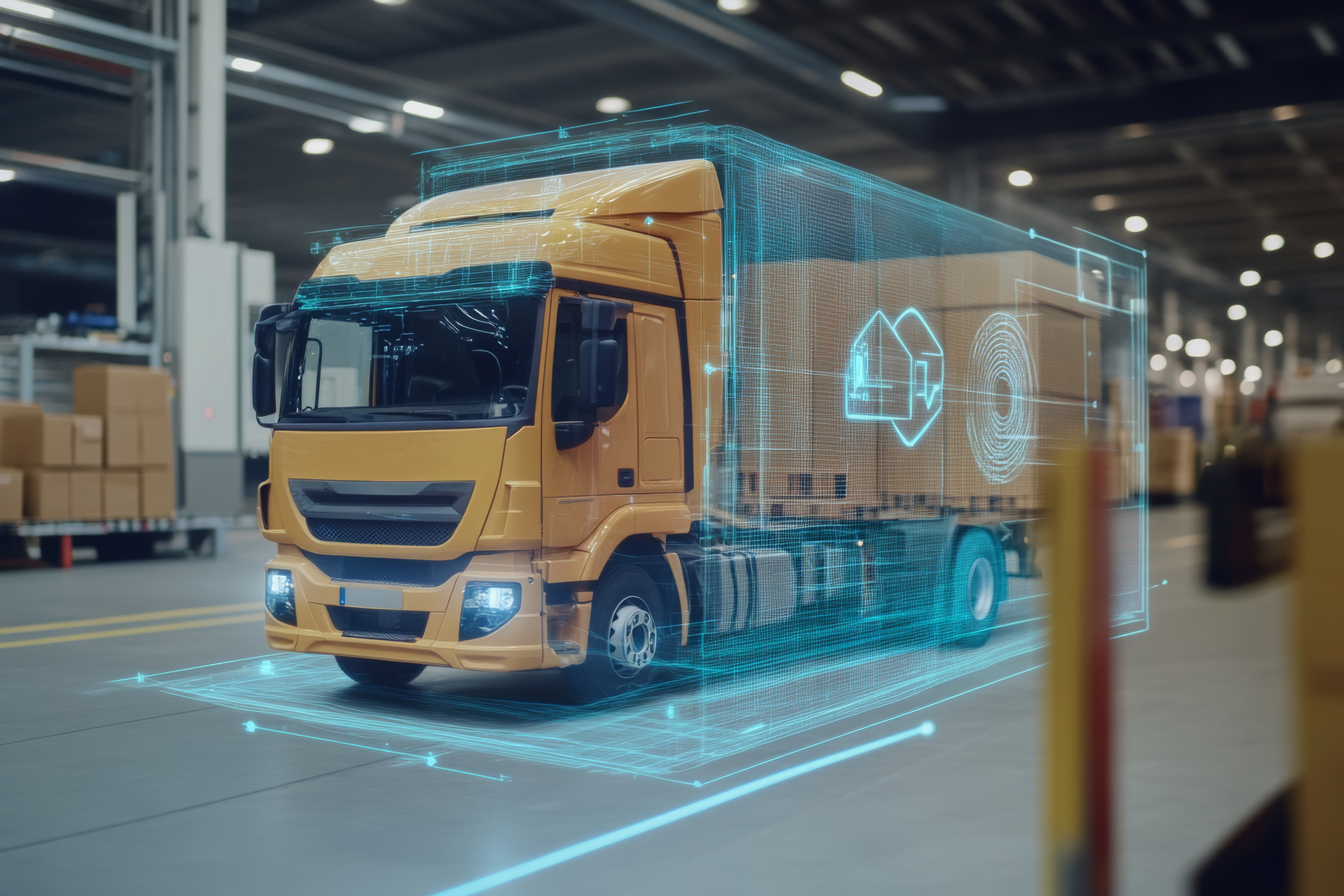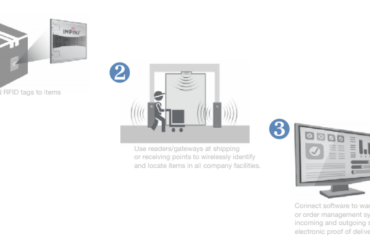
In the dynamic landscape of digitisation and Industry 4.0, RFID (Radio Frequency Identification) technology has established itself as a fundamental pillar for companies seeking efficiency, accuracy and visibility in their operations. Forget traditional identification systems; RFID represents an evolutionary leap that allows objects, assets and people to be identified and tracked automatically, without physical contact or line of sight. If your company is looking to optimise logistics processes, improve inventory management, increase security or enhance traceability, understanding what RFID is and how it works is the first step towards digital transformation.
This article will guide you through the ins and outs of RFID, exploring its components, how it works in detail, its myriad RFID applications in various industries and the tangible RFID benefits that position it as a strategic investment for the future.
What Exactly is RFID? The Essential Definition of Radio Frequency Identification
At its core, RFID is a method of automatic identification that uses electromagnetic fields or radio waves to automatically identify and track electronic tags attached to objects. Unlike barcodes, which require a scanner to optically read the printed lines, RFID allows reading at a distance, through obstacles and multiple tags simultaneously. This capability makes a world of difference in speed, efficiency and versatility.
Radio frequency identification technology creates a wireless communication bridge between an RFID tag and an RFID reader. The tag stores identification data, which can be simple (such as a unique serial number) or complex (such as maintenance history, date of manufacture, etc.). The reader, by emitting radio waves, ‘wakes up’ the tag (especially passive tags) and receives the data it transmits.
 What exactly is RFID?
What exactly is RFID?
How an RFID System Works: The Key Components and Their Interaction
A complete RFID system is made up of the synergistic interaction of three main elements:
-
RFID Tags: These are the heart of the system at the object level. Each RFID tag consists of:
-
RFID Readers (Readers or Interrogators): are the devices that initiate and manage the communication. An RFID reader has:
-
RFID antennas: They facilitate the transmission and reception of radio signals between the reader and the tags. The design, size and type of the RFID antenna are crucial to define the coverage area and performance of the system.
 Evolution of RFID
Evolution of RFID
The Communication Process
The basic operation involves the reader emitting a radio signal. When an RFID tag enters the field of this signal, the energy captured by the tag’s antenna activates the chip (in the case of passive tags). The chip responds by modulating the radio signal with the stored information. The reader receives this modulated signal, decodes it and extracts the data, which is then sent to an RFID management software or enterprise system (such as an ERP or WMS) for real-time processing. This exchange often occurs in milliseconds and allows multiple tags to be read simultaneously through a process called ‘anti-collision’.
The history of RFID dates back to World War II, where it was used to identify friendly aircraft (“identification friend-of-foe” IFF). However, its commercial and civilian development began to take shape in the 1970s and 1980s, with early applications in electronic tolling and livestock tracking.
In recent decades, standardisation (notably with the EPCglobal standards for UHF RFID) and reduced tag costs have catapulted RFID to mass adoption in a wide range of industries, making it a mature and proven technology for process optimisation.
Key RFID Applications: Transforming Sectors and Creating Efficiency
The applications of RFID technology are vast and continue to expand as companies discover new ways to leverage its capabilities. Some of the most impactful application areas include:
-
RFID in Logistics and Supply Chain
-
RFID in Retail
-
RFID in Healthcare (Hospitals and Medical Centres)
-
RFID in Food and Agriculture
-
RFID in Security and Access Control
-
Other Featured Applications
Key RFID Benefits: Why Invest in Radio Frequency Identification
 RFID in Logistics and Supply Chain
RFID in Logistics and Supply Chain
Implementing an RFID system offers a number of strategic benefits that directly impact a company’s profitability and operational efficiency:
-
Increased Operational Efficiency: Automating identification and counting processes drastically reduces manual labour times. Simultaneous reading of multiple tags speeds up tasks such as goods receipt or inventory.
-
Significant Improvement in Data Accuracy: By eliminating the human error inherent in manual barcode scanning or data entry, RFID ensures greater reliability in inventory, asset and traceability information.
-
Real-Time Visibility: Data captured by RFID readers is instantly transmitted to the management system, providing an up-to-date and accurate view of the situation, facilitating informed decision making.
-
Shrinkage Reduction: More accurate inventory management and the ability to track individual assets helps identify and reduce causes of shrinkage such as theft, shipping errors or expiration.
-
Optimising Inventory Levels: With accurate information on stock on hand, companies can optimise inventory levels, avoiding overstocks that tie up capital and shortages that result in lost sales.
-
Improved Traceability: Detailed tracking of each item throughout its lifecycle is crucial for safety, quality management and regulatory compliance.
-
Long-Term Cost Savings: Although the initial investment may be higher than that of barcode systems, the savings generated by improved efficiency, reduced shrinkage, inventory optimisation and reduced errors often justify and exceed the initial cost.
-
Increased Security and Access Control: RFID credentials offer a robust authentication method to restrict access to sensitive areas.
-
Improved Customer Experience: In retail, accurate inventory management means that products that appear online are actually in stock in the shop, enhancing the omni-channel experience. In other sectors, efficiency means faster and more reliable service.
The Future of RFID: Integration with IoT, AI and Beyond
The future of RFID is promising and is intrinsically linked to the evolving global technology landscape. RFID is a key enabler of the Internet of Things (IoT), providing a unique digital identity to millions of everyday objects and industrial assets. By combining the data captured by RFID with IoT platforms, Big Data analytics and Artificial Intelligence (AI), businesses can move from simple identification to predictive decision making and intelligent automation.
Imagine fully automated warehouses where RFID and AI-guided robots manage the movement of goods, or self-optimising supply chains that adjust stock levels in real time based on predicted demand and the location of RFID-identified products. RFID will become increasingly ubiquitous, integrating into packaging, vehicles, urban infrastructure and even individual products to boost the circular economy and sustainability through traceability of a product’s entire lifecycle.
 Increased Operational Efficiency:
Increased Operational Efficiency:
Kyubi System: Your Strategic Partner for Successful RFID Implementations
Implementing a successful RFID solution requires not only the right technology, but also a deep understanding of the specific needs of each business. At Kyubi System, we specialise in designing and implementing custom RFID solutions for a wide range of industries.
We understand that every business is unique, so we offer a comprehensive approach from initial consultancy and feasibility analysis, to the supply of high quality RFID hardware (readers, antennas, RFID printers), an extensive range of RFID tags adapted to different environments and applications, and powerful and flexible RFID software that integrates seamlessly with your existing business systems (ERP, WMS, etc.).
Our team of experts will accompany you through every phase of the project, ensuring a smooth RFID implementation and maximising your return on investment (ROI). Whether you need an RFID access control system, an RFID inventory management solution for retail, or an RFID traceability platform for logistics or healthcare, at Kyubi System we have the experience and technology to turn your operational challenges into competitive advantages.
Don’t wait any longer to join the RFID revolution. Contact us today and find out how we can help you optimise your processes, improve efficiency and secure the future of your business with market-leading radio frequency identification technology.
RFID Frequently Asked Questions (FAQs)
Here we answer some of the most common questions about RFID technology:
-
What is the key difference between RFID and barcodes? The main difference is that RFID does not require line-of-sight and can read multiple tags simultaneously from a distance, whereas barcodes require direct, individual optical reading. RFID also allows more data to be stored and the tags are more durable.
-
What factors affect the read range of an RFID tag? The range depends on the operating frequency (LF, HF, UHF), whether the tag is passive or active, the power of the reader, the size and design of the antennas, and the environment (presence of metal, liquids, interference).
-
What RFID frequencies exist and what are they used for? RFID LF (125-134 kHz), RFID HF (13.56 MHz), RFID UHF (860-960 MHz) each with specific applications such as access control, smart cards, or logistics and inventory.
-
How expensive is it to implement an RFID system? Although the initial cost may be higher, the savings in efficiency, error reduction and loss are often more than justified in the medium to long term.
-
Is the information stored on RFID tags secure? Yes, security measures such as encryption, authentication and password protection are in place.
-
Can RFID tags work in harsh environments such as metal or liquids? Yes, using specialised tags such as on-metal tags and suitable antennas.
-
What is the lifetime of an RFID tag? Passive tags can last indefinitely, while active tags depend on the battery (months or years).



